Polar blue parrot fish (4 pieces)
Original price was: ₹600.₹340Current price is: ₹340.
- Common Name : Polar blue parrot cichlid, Zebra parrots, Short body convicts, Hybrid parrot cichlid
- Quantity : 4 pieces
- Type : Freshwater fish
- Origin : Taiwan
- Size : Up to 8 inches
- Life Span : 5-8 years
- Care level : Easy
- Diet : Omnivore
- Temperament : Semi aggressive
- Breeding : Easy
- Temperature : 76-82° F / 22-27° C
- pH : 6.5-7.5
- Hardness : 2-25 dGH
- Ideal Tank Size : 30 gallons
Description
Size: Medium
| Common name | Polar blue parrot cichlid, Zebra parrots, Short body convicts, Hybrid parrot cichlid |
| Type | Freshwater fish |
| Origin | Taiwan |
| Size | Up to 8 inches |
| Life span | 5-8 years |
| Care level | Easy |
| Diet | Omnivore |
| Temperament | Semi aggressive |
| Breeding | Easy |
| Temperature | 76-82° F / 22-27° C |
| pH | 6.5-7.5 |
| Hardness | 2-25 dGH |
| Ideal tank size | 30 gallons |
ORIGIN
Fishes coming under the family Cichlidae are distributed in most of the tropical and sub tropical waters. But you may never find a Polar blue parrot fish in the wild even though they are available throughout the world. Guess why? Because they are not born wild! These beautiful blue fishes are considered to be artificially bred in Taiwan, Asia. Many theories have been postulated on the origin of these hybrids, one of them being a cross between convicts and blood parrots. This theory is widely accepted as their appearance complimenting both the parent characteristics. The head of the polar blue resembles that of the blood parrots and the body to a convict cichlid. Another popular theory is that they are hybrids of Honduran red points and convicts. They came in to the market as an expensive fish, but the easiness in breeding and their ability to withstand a wide range of water parameters made them popular among aquarium hobbyists and available in every corner of the world.
SIZE & APPEARANCE
Polar blue cichlids have a distinct balloon shaped body which can reach up to 8 inches. They are ash blue in color with dark blue stripes across the body that almost looks black. The stripes are inherited from their other parent, the convict cichlids. Their body also possesses shiny blue dots which makes them pleasing to our eyes. They have one nostril in each side where as most of the fishes has two. Unlike blood parrots, they have small yet fully functional mouth. Since they are a member of cichlid family, in addition to regular teeth Polar blue cichlids also possess a fully developed set of pharyngeal teeth in their throat. To deter the predators they have spiny rays in the edges of anal, pectoral, dorsal, and pelvic fin. The soft front parts of the fin help them to glide effortlessly in the water. They grow fast but not too big which makes them a good collection to your aquarium.
LIFE SPAN & SEXUAL DIMORPHISM
Life span of any fish depends on how you take care of them. If properly treated, your Polar blue cichlids will live up to 5-8 years and can retain their attractive look throughout their life span. Both the sexes can be distinguished as they are sexually dimorphic. The males are slightly bigger than that of female with a thinner and broader body and are intensely colored. The beak is prominent in males and also possesses a distinct nuchal hump on the forehead. The fins are sharper and longer. The female polar blue cichlids have a round body with shorter, rounder fins. During breeding season, the belly of female develops a pink-orange color. The tail of the male is reddish, while that of female is light bluish. Another morphological feature to distinguish them is the shape of their anal pore; males have a V shaped anal pore and females have an O shaped anal pore. It is easy to tell the difference after they reach sexual maturity, before that it’s challenging to distinguish the sexes.
TEMPERAMENT
Some aquarium hobbyist describes Polar blue cichlids as semi aggressive and some describe them as gentle and calm fishes. Due to their unconfirmed origin they can be described as having both calm and semi aggressive personalities. Usually the fish is calm and don’t get involved in fights with other tank mates unless they start a fight with them. They like to roam and decorate their tank on their own. They show typical cichlid behavior like rummaging through the substrate, toppling decors, uprooting the plants etc. Sometimes they are seen marking random objects in the tank. The change in temperament is observed during breeding season, where the fish becomes hostile and males compete for females’ attention. They are much more territorial during this period of time.
DIET
Polar blue cichlids are omnivorous fishes which eats plant based as well as meat based products. Due to its compact body size and cramped up digestive system, they are unable to digest heavy food. So you should feed them with food that can be digested easily. Food can be given in the form of pellets, flakes, or live feed like brine shrimp, daphnia, blood worms etc. It is better to feed the food specifically made for these fishes which are available in market. You can feed them one to two times a day and live feed should be given once in awhile. Polar blue parrots are known for their beauty. You can maintain their richer and brighter color by including carotenoids in their diet.
TANKMATES
Polar blue cichlids are generally not considered as community fishes. Small fishes like guppies and tetras won’t stand a chance against them. Unlike other parrots fishes, they have a fully functional mouth and have a habit of nipping other fishes. But they can be placed in community tanks if you have some similarly sized fishes or you can keep them in a species only tank. However, some of the tank mates which are compatible with Polar blue cichlids are given below:
- Angel fish
- Blood parrot cichlid
- Severum
- Giant gourami
- Honey gourami
- Firemouths
- Cory catfish
- Acaras
- Yoyo loach
- Clown loach
- Kuhli loach
- Bristle nose plecos
CARE LEVEL AND PARAMETERS
Polar blue cichlids are not demanding fishes which make them ideal as a beginner fish. Since they are easy to take care of, they don’t require constant attention. Polar blue cichlids are fun to watch due to their constant rearrangements of substrates and decors within their tank. They are peaceful if they don’t have any other tank mates which start a fight with them.
Tank size: The ideal size for keeping a pair is 30 gallon tank. If you want to add more polar blue cichlids you will have to have additional 10-15 gallons per fish. Bigger tank means happier fish. Smaller tanks may stress the fish; slow down their movements which results in low life span.
Substrate: Polar blue cichlids are brilliantly colored and to bring out their beauty it is better to use a dark colored substrate. Sandy substrate will do well because they have a thing for digging and picking up substrate. It is better to avoid rocky substrate or anything with sharp edges that can injure the fish.
Lighting: Lighting also helps in bringing out your fish color and also aids in aquatic plant growth. Bright white color and blue color can help you put a charm around your polar blue cichlids.
Keep in mind that polar blue cichlids are messy eaters so it is important to change the water in your tank by 25%- 30% every week. You should always remove the leftover food to reduce water contamination. The temperature of water that you are adding should be the same that of the water present in the tank. The filter should be cleaned at least twice a month. Even though Polar blue cichlids can survive a wide range of water parameters, the ideal water temperature is between 72-80° F. But you can keep the temperature to 80° F; it will be suitable for other tank mates in your tank. pH of 7 is always preferable for almost all the fishes. The Polar blue cichlids can withstand a pH of 6.5 to 7.5. They prefer to live in soft water so it is better to keep the hardness of water in between 2 to 25 dGH. Due to their compact body size and not so strong fins it is hard for them to stay in harsh water as it damages their fins resulting in slow swim power. Adding an aquarium filter can lower their stress level. High power filter is not recommended as it can obstruct the fish while swimming. Hang on back aquarium filters are an ideal match for them as it manages the flow rate and produce gentle flow of water.
Always maintaining consistent water parameters can help you keep your aquarium in full health and your Polar blues to live their life to the fullest extent.
| Tank size | 30 gallons |
| Substrate | Dark colored and sandy substrate preferable |
| Lighting | Bright white or Blue preferable |
| Filter | Hang on back aquarium filter |
| Temperature | 72-80° F |
| pH | 6.5-7.5 |
| Hardness | 2-25 dGH |
| Water movement | Weak to medium |
| Nitrate | <10 ppm |
| Phosphate | <0.05 |
BREEDING
Breeding of Polar blue cichlids are relatively easy and can be done by people with little experience. The male to female ratio is 1:1. If you add multiple females to one male, it can result in hundreds of unwanted fries as the male is capable of mating with multiple females (polygamous). If you have the intention to breed the Polar blue cichlids, feed them with protein rich food and slightly increase the temperature of water.
Breeding tank: A tank size of 30 gallons is enough for breeding a pair. You can either have a bare bottom aquarium or with any substrate. For the female to lay her eggs, place a plate with smooth surface or a small cave at the bottom of the tank. It would be better to place the breeding pair alone in the tank as they become territorial during the breeding season.
Courtship behavior and caring fries: Once the pair is ready to breed, they show courtship behavior in which the male tries to attract the female. A female can lay up to 300 eggs once in a month depending on its age and size. The female has a big egg tube and her egg filled belly turns pink-orange color. Both the sexes are aggressive and territorial at this point. The female fish starts to clean the site to lay eggs which are transparent. Then the male will fertilize it. One way to distinguish the fertilized egg from unfertilized egg is that the former turns darker in color while the latter turns opaque. This process can take up to 12 hours. Both the sex especially female guard the egg and she will fan her eggs to make sure that the eggs get enough oxygen. The eggs will hatch in 2-3 days and the newly hatched fries have yolk sac attached on to them. They are small and always stay in groups until they can freely swim. Fries of Polar blue cichlids rely on the yolk sac for nutrition for the first 4-5 days. After that, you will have to feed the fries with pulverized flakes or pellets, newly hatched brine shrimp, microworms, and daphnia. Make sure the fries are eating properly and you are not over feeding them. If they fail to take up the feed you provide, change the type of feed immediately. It is suggested to use a sponge filter and a heater. Polar blue cichlids are excellent parents because they show parental care even after hatching of eggs. The fries can be transferred into a new tank once they become free swimmers and grow to a size where they get big enough and not fit into another fish’s mouth.
1 review for Polar blue parrot fish (4 pieces)
Only logged in customers who have purchased this product may leave a review.

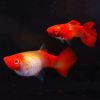
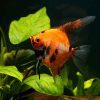
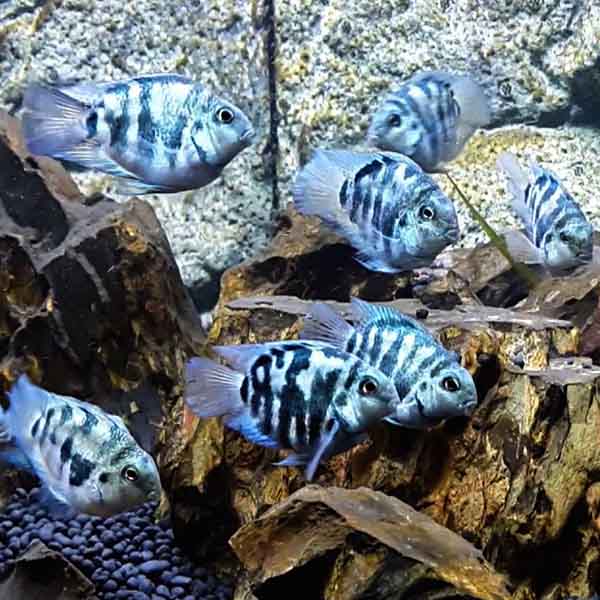
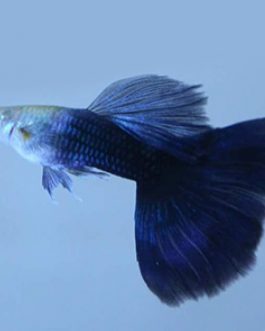
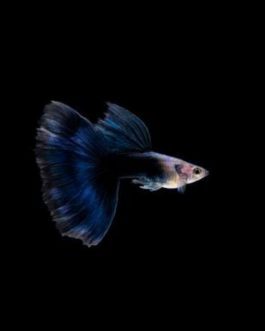

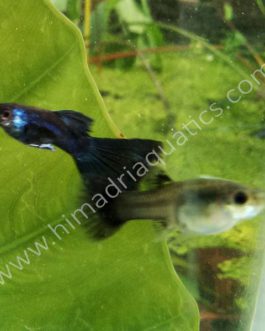
Adarsh Chandran C S (verified owner) –
It is a really nice service. Healthy Fish, Fast Delivery. I ordered 2 pairs and I got 3 pairs. All are safe and very active. Thanks himadri aquatics